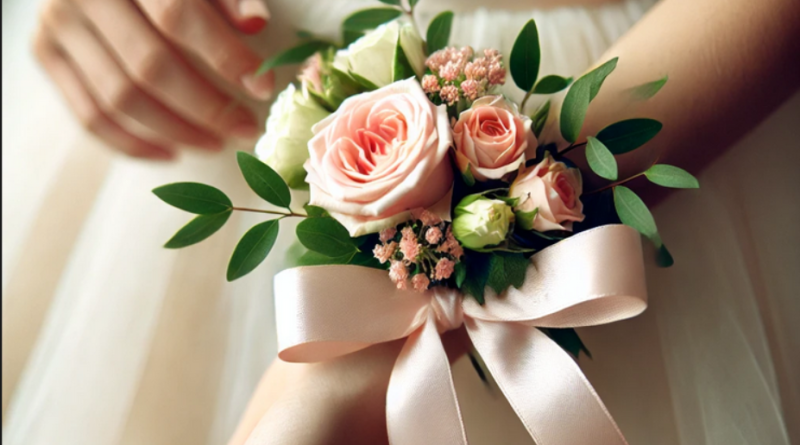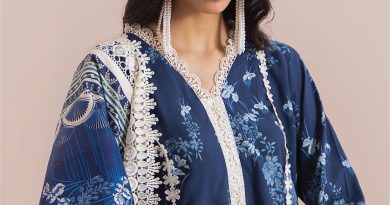Corsage: A Timeless Fashion Accessory for Every Occasion
More than just a floral decoration, a corsage is a classic representation of grace, beauty, and custom. Corsages give any outfit a unique touch, whether worn for formal occasions like proms or weddings. The history of corsages, their meaning, their various varieties, how to wear them, and advice on picking the ideal one will all be covered in this article. You’ve come to the correct spot if you want to learn everything there is to know about corsages!
What is a Corsage?
A corsage is a little floral arrangement that is usually fastened to clothes or worn on the wrist. It is frequently worn by women at formal dinners, dances, festivals, and weddings. Although corsages have historically been made with fresh flowers, contemporary designs also incorporate silk flowers, ribbons, pearls, and beads to make durable decorations. In addition to being ornamental, corsages have sentimental significance. They are frequently presented as gifts to recognize outstanding people at significant occasions since they stand for love, respect, and gratitude.
The History of Corsages
The term “corsage” is derived from the French phrase “bouquet de corsage,” which translates to “bodice bouquet.” Small floral arrangements were worn by individuals in the past to ward off bad luck and bring good fortune. This custom developed into a mark of respect and love throughout time.Women wore corsages to formal events, weddings, and dances throughout the 18th and 19th centuries. In the past, men would give corsages to their female friends as a sign of appreciation; this custom is still observed today, particularly during weddings and proms.
Different Types of Corsages
Corsages come in various styles, each designed for a specific occasion or preference. Here are some of the most common types:
1. Wrist Corsage
One of the most common styles, particularly for weddings and proms, are wrist corsages. They are fastened to the wrist by a ribbon, bracelet, or elastic band. These corsages are a practical option for contemporary gatherings because they are easy to wear and don’t need to be pinned.
2. Pin-On Corsage
A tiny pin is used to secure a pin-on corsage to a dress or ensemble. Mothers of the bride and groom, grandmothers, and other distinguished guests frequently wear it, making it a timeless option for formal events.
3. Boutonniere
Men wear boutonnieres, which are smaller versions of corsages, on their lapels. Prom dates, grooms, and groomsmen frequently wear boutonnieres, which are usually constructed from a single flower or a tiny floral arrangement.
4. Hair Corsage
The purpose of hair corsages is to create flowery hair decorations. They are frequently worn by brides and bridesmaids for a sophisticated and romantic appearance. For effortless styling, these corsages can be fastened to combs, headbands, or hair clips.
5. Shoulder Corsage
A shoulder corsage is similar to a pin-on corsage but is worn higher on the shoulder rather than the chest. It is often used at weddings and formal gatherings for an elegant, vintage-inspired look.
When and Where to Wear a Corsage?
Corsages are worn at various special events, adding charm and sophistication to any outfit. Here are some common occasions where corsages are a must-have accessory:
1. Weddings
Mothers and grandmothers of the bride and groom wear corsages as part of a wedding custom. Sometimes, especially during informal or outdoor weddings, bridesmaids choose to wear corsages rather than bouquets. For a sweet, delicate appearance, flower girls can also sport hair or wrist corsages.
2. Proms and Homecoming Dances
The custom of young men giving their prom girlfriends a wrist or pin-on corsage has been around for decades. A young woman’s prom dress looks exquisite with this tiny but meaningful gesture, which also becomes a treasured memory.
3. Formal Events and Galas
People attending charity galas, award winners, and honored guests can all wear corsages to black-tie affairs. The elegance of formal dresses is enhanced with a nicely designed corsage.
4. Graduations
As a significant event, graduation can be made even more memorable with a corsage. In order to symbolize the importance of the occasion, many graduates and their loved ones wear corsages.
5. Anniversaries and Special Celebrations
Corsages are a heartfelt way to commemorate someone special on their special day, whether it’s a retirement celebration, birthday party, or milestone wedding anniversary.
You can also check Bobs Furniture: Quality, and Affordability for Your Home.
How to Choose the Perfect Corsage?
Choosing the right corsage involves considering factors such as the event, outfit, and personal preference. Here are some key tips to help you select the perfect corsage:
1. Match the Dress
The color and style of the corsage should match those of the dress. You can select striking and colorful flowers if the ensemble is neutral. Choose a delicate corsage with a straightforward design for outfits with patterns or vibrant hues.
2. Consider the Event Theme
White flowers and gentle pastel colors are perfect for weddings. More glitzy styles with striking hues and accents like pearls or rhinestones are frequently required for proms.
3. Fresh or Artificial Flowers?
- Fresh Flowers – Offer a natural fragrance and beauty, perfect for short-term wear.
- Artificial Flowers – Last longer and can be kept as a keepsake. Silk corsages are a great option for long-lasting elegance.
4. Choose Comfortable Wear
If you prefer a lightweight and hands-free option, go for a wrist corsage. If you like a more traditional look, a pin-on corsage works well.
How to Properly Care for a Corsage?
If you want your corsage to stay fresh and beautiful throughout your event, follow these simple care tips:
- Refrigerate Fresh Corsages – Store them in the fridge in a plastic container to keep them fresh.
- Avoid Direct Sunlight – Keep the corsage away from heat or sunlight, as it can cause the flowers to wilt.
- Handle with Care – Be gentle with the flowers and avoid touching them too much to prevent bruising.
- Use Floral Spray – If you want the flowers to last longer, use a floral setting spray.




